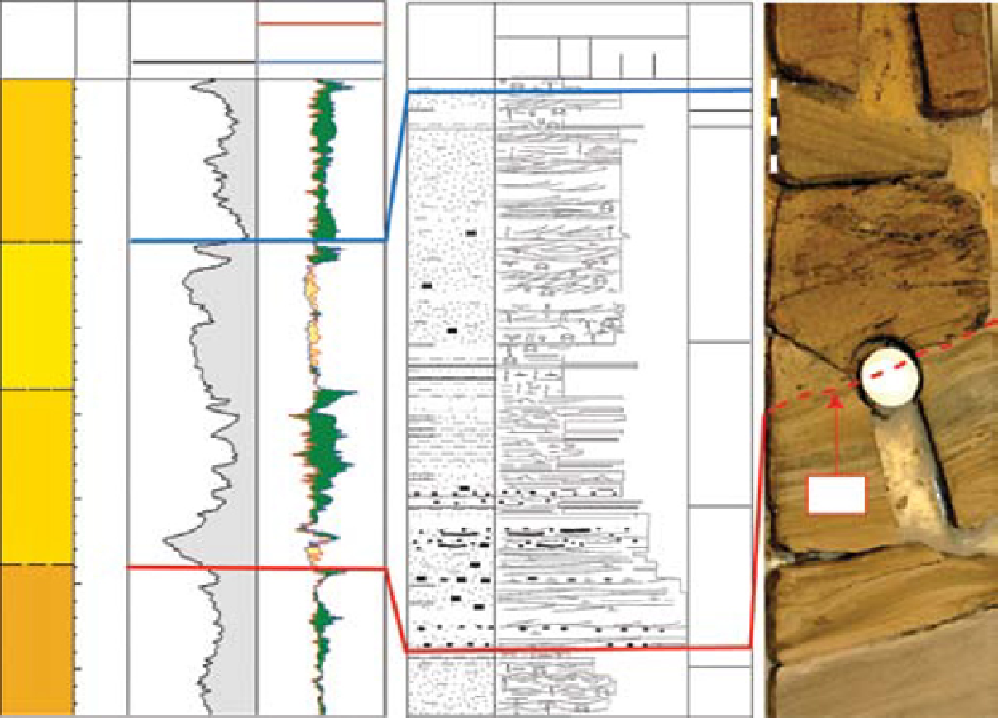Geoscience Reference
In-Depth Information
GRAIN SIZE AND SED.
STRUCTURES
NPHI
0.75
%
-0.15
FACIES
ASS.
Depth
(m)
Zone
LITH.
SAND
GR
RHOB
VF
FM
CLAY
1.45
g/cc
2.95
0
API
250
FA 8
FA 7
2695
2700
FA 8
2705
FA 7
2710
c.SB
2715
2720
FA 14
FA 7
2725
FA 8
Fig. 22.
Example of wireline log signature and core description from sub-zones Åre 5.2 and 5.3 in well 6507/7-A-46. The
top of Åre 5.1 Sub-zone is cut by a tide-influenced distributary channel. This erosive surface is characterised by a lag of
mud-clasts, and is interpreted as a sequence boundary (c. SB on core photograph). (See Fig. 19 and text for further descrip-
tion of the facies associations, Fig. 6A for the core description legend and Fig. 4 for abbreviations.)
bay facies and eventually a gradual dominance of
distal bay deposits (upper part of Åre 5.2 Sub-
zone and Åre 5.3 Sub-zone).
Based on its incisive nature and associ-
ated basinward shift in facies, base of the Åre
5.2 Sub-zone channel belt is interpreted as a
candidate sequence boundary recording a pro-
nounced fall in relative sea-level (c.SB2;
Table 1, Figs 4 and 18). The succeeding infill,
displaying a gradual landward change in facies,
resemble the transgressive evolution of the
distal reaches of a wave-dominated estuary,
in keeping with the facies descriptions pro-
posed by Dalrymple
et al
. (1992). This facies
model describes an estuary with a bay-head
delta in the landward end. However, based on
the available data, the presence of an estuarine
bay-head delta setting cannot be demonstrated
conclusively for the deposits within the Åre 5.2
and 5.3 Sub-zones.
The Åre 5.2 Sub-zone and the succeeding Åre
5.3 interval comprise several criteria which are
characteristic to incised valley estuaries (cf. Boyd
et al
., 2006) such as: 1) a basal sequence boundary
with erosional relief; 2) basinward shift in facies
and 3) transgressive infill. However, there is,
based on the facies recognised in the current data,
a lack of evidence for lateral interfluves and/or
fluvial lowstand deposits within the valley, which
are important, but not essential, criteria for identi-
fication of incised valley estuaries.
An alternative interpretation of this down-cut-
ting tide-influenced channel belt is that its basal
surface is formed by increased tidal energy and
resultant scouring due to basin reconfiguration.
Similar channelised incisions formed by tidal

Search WWH ::

Custom Search